Physical Prepaid Sim Vs eSIM: Travelers Guide and Comparison
Travelers to the USA, UK, Canada, and Australia today have more choices than ever for staying connected. Local carriers offer prepaid SIM plans with generous data allowances, and a growing number of eSIM and travel SIM providers offer global data packages that avoid the hassle of airport lines. This guide compares both the major local telecom operators and the popular eSIM/travel SIM services in each country, with up-to-date plan details for 2025. We focus on practical information for tourists: plan features, coverage considerations, and real-world pricing in local currency (USD, GBP, CAD, AUD). The goal is to help you decide whether to grab a local prepaid SIM in-country or purchase an eSIM/travel SIM before your trip.
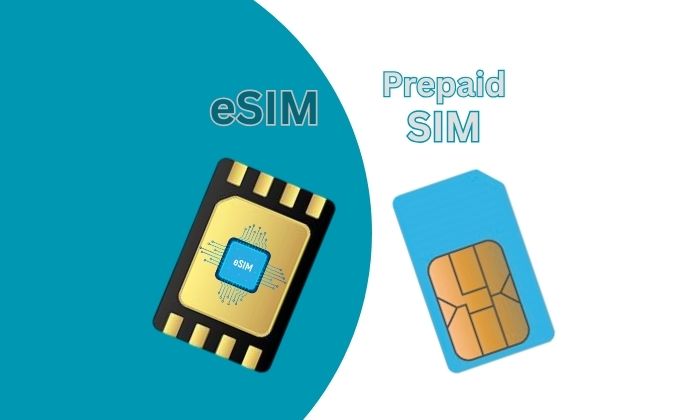
United States: Major Carriers and Travel eSIMs
In the US, the three big networks – AT&T, Verizon, and T-Mobile – each offer prepaid plans with various data tiers. All now support 5G, and even short-term tourists can buy prepaid plans (or eSIMs) without a contract or credit check.
-
AT&T Prepaid: AT&T’s prepaid lineup is simple. For example, AT&T offers a 30 USD plan with 5 GB of 5G/4G data. Unlimited data plans start at 40 USD/month (with 30 GB of full-speed data, then slower speeds) and go up to 55 USD/month for truly unlimited data. These plans include unlimited talk/text and allow hotspot use (at reduced speeds after a cap). An especially cheap option is a 12-month pre-paid plan that effectively brings unlimited data down to 25 USD/month if paid upfront – though that requires committing to a year.
-
Verizon Prepaid: Verizon’s prepaid plans are also straightforward. A 15 GB plan costs 35 USD/month. Unlimited plans run 50 USD (with 5 GB hotspot) up to 60 USD for the top Unlimited Plus plan. For example, Verizon’s Unlimited Plus Prepaid gives 50 GB of high-speed data plus 25 GB of hotspot data for 60 USD. (Taxes/fees extra.) The trade‐off is that prepaid data can be deprioritized during congestion, so peak speeds may slow after heavy usage.
-
T-Mobile Prepaid: T-Mobile’s new 2025 prepaid offerings include a Starter plan with 15 GB for 40 USD with AutoPay (first month 45 USD) and an Unlimited Monthly plan (unlimited 5G data) for 45 USD with AutoPay (first month 50 USD). The premium Unlimited Plus plan costs 60 USD with AutoPay (65 USD first month) and adds up to 5 GB hotspot plus free texting to/from the US when roaming in Mexico/Canada. T-Mobile’s plans also come with perks (T-Mobile Tuesdays rewards, etc.) and a 5-year price guarantee on the base rate – a novel feature not offered by the other carriers.
For a short trip, T-Mobile’s 45 USD plan (50 GB premium data) or Verizon’s 50 USD plan (unlimited data, 5 GB hotspot) are budget-friendly unlimited options. AT&T’s 30 USD plan is best for light users (5 GB data). In all cases, adding AutoPay yields the listed prices; without AutoPay, expect +5 USD. All three carriers offer eSIMs for their prepaid plans, so you can often buy and activate a plan online or at the airport without a physical SIM card.
Travel SIM/eSIM options: Many travelers prefer an eSIM or travel SIM to avoid buying a local SIM on arrival. Global eSIM providers like Airalo, Ubigi, and Nomad let you purchase a US data plan from home. For example, Airalo and Nomad sell US-only eSIM bundles (e.g. ~10 GB for ~$30). Tech reviews note that providers like Jetpac even offer super-cheap deals – e.g. new users can get 1 GB for just $1 (valid 4 days). On the higher end, companies like Holafly focus on unlimited data passes (at higher prices). Physical travel SIMs (e.g. from companies like SimOptions or OneSimCard) also exist but are less popular now that most new phones support eSIM. In short, for a quick trip the local prepaid SIM is cheaper per GB, but for convenience or multi-country travel an eSIM plan can be worth it. (Note: US eSIM plans usually provide data only; voice calls go over Wi-Fi apps.)
United Kingdom: Local SIM Deals and eSIMs
In the UK, the main networks for prepaid (“pay-as-you-go”) SIM cards are EE, Vodafone, O2, and Three (Virgin Mobile is also available, using the EE network). Each offers a range of data bundles valid for 30 days. UK plan pricing is quoted in pounds sterling (£).
-
Vodafone UK: Vodafone’s pay-as-you-go plans include, for example, 7 GB for £10, 20 GB for £15, 40 GB for £20, and 100 GB for £30. If you need it, Vodafone also offers unlimited data with unlimited calls/sms for £40. (All plans include unlimited UK calls/texts.) Vodafone no longer includes free EU roaming on PAYG, so Europe travel will incur extra fees (Vodafone added £2/day Roam Data as of 2021).
-
O2 UK: O2’s prepaid bundles are similar. The entry plan is 8 GB for £10, then 25 GB for £15, 40 GB for £20, or 125 GB for £30. O2 does include some free EU roaming (up to 25 GB/month) on its pay-as-you-go bundles, which can be handy if you plan to continue on to Europe.
-
EE (BT) UK: EE’s prepaid plans match those of Vodafone: 20 GB for £10, 50 GB for £15, 100 GB for £20, and 125 GB for £30. (EE’s £20 plan gives you 100 GB, per the list.) A noteworthy quirk: EE does not allow prepaid SIMs to access its 5G network, so speeds cap at 4G LTE (max ~25 Mbps) even if you pay for more data. Also, like Vodafone, EE doesn’t include free EU roaming on PAYG anymore.
-
Three UK: Three’s prepaid plans are a bit pricier for the data. For 2025 they offer 4 GB for £19, 12 GB for £22, 25 GB for £24, and unlimited data for £31. Unlimited on Three can be attractive, and Three still includes free roaming in many destinations – not just Europe but also countries like Australia, Brazil, and the US (with some caps). However, note that Three also throttles data during congestion.
-
Virgin/GiffGaff/Lebara (MVNOs): Virgin Mobile UK (on EE) and GiffGaff (on O2) have their own bundles. For example, GiffGaff sells 150 GB for £35. Lebara’s PAYG plans start very cheap (£5 for 5 GB) but have limited EU roaming. These MVNOs can be decent for local use, but we focus here on the main networks.
Map: Three UK’s 4G/5G coverage is generally strong, especially in cities and major highways, making it a solid choice for travelers in the UK.
eSIM/Travel SIM in the UK: Tourists often simply buy one of the above pay-as-you-go SIMs at Heathrow or in town. But eSIM options are growing: Airalo, Nomad, Ubigi and others sell UK eSIM data packs (for example, Airalo’s UK plan might be a few pounds per GB). Compared to a local SIM, eSIMs often include EU roaming at no extra cost, which local SIMs lack post-Brexit. One downside: most global eSIMs are data-only (no UK phone number), but they avoid airport SIM queues. In practice, the price differences are small. Local 30-day SIM bundles (e.g. ~£30 for 100 GB) are about the same cost as many eSIM plans for the same data.
Canada: Local SIM Plans vs eSIM Solutions
Canada’s big carriers – Bell, Rogers, Telus – each sell prepaid SIM cards, but coverage-wise they all rely on the same towers (Bell and Telus share one network, Rogers is another). Notably, prepaid SIMs in Canada do not include 5G (only 4G/LTE), unlike postpaid plans. Data plans tend to be limited in size and relatively expensive, according to a Canada travel guide. All pricing here is in Canadian dollars (CAD$).
-
Telus (and Koodo): Telus prepaid plans (as of April 2025) are 1 GB for C$35, 5 GB for C$45, or 10 GB for C$55, all valid 30 days. Telus prepaid sims are purchased with a one-time SIM fee (often included). These plans include unlimited Canadian talk/text and can be bought with an eSIM option.
-
Bell: Bell’s prepaid (formerly Virgin) plans are similar but with slightly more data: for example 5 GB for C$30, 25 GB for C$40, 50 GB for C$50, and 75 GB for C$60. (Bell often lets you add an extra 25 GB if you recharge on AutoPay.) Like Telus, Bell prepaid allows only LTE speeds, no 5G on prepaid..
-
Rogers (and Fido): Rogers’ prepaid plans historically cost more for less data: about 2.5 GB for C$40, 4.5 GB for C$45, or 8 GB for C$55. Many travelers find Rogers prepaid less attractive due to these high per-GB rates. (Note: Bell and Rogers merged networks recently, so check any carrier updates.)
-
Virgin+ Canada: Virgin (on Bell’s network) offers bundles like 1 GB for C$35 or 25 GB for C$40 – mirroring Bell, with an added 40 GB plan for C$85 that even includes the USA.
eSIM/Travel SIM in Canada: Unlike the UK, you cannot buy a Canadian eSIM at a store (telcos haven’t launched tourist eSIMs in-store). The travel guide strongly recommends using an eSIM or travel SIM instead of local prepaid because local prepaid is expensive. For example, it notes that for $29 USD you could get 25 GB via Bell (around CAD$40), which is “pretty good”, but still overpriced compared to eSIM alternatives. Popular eSIM providers (SimOptions, Airalo, Nomad) offer Canada plans – often around USD$10–30 for 5–20 GB (i.e. roughly CAD$15–45 for similar data). These eSIM plans do support 5G (unlike local prepaid).
In short, if you need a Canadian SIM, an eSIM is usually cheaper and more convenient. A local SIM card (if bought at, say, Toronto airport) gives LTE speeds only and often costs over CAD$40 for even small data tiers. eSIM providers, by buying wholesale data, can undercut these prices. For example, Tuque (an Airalo brand) advertises 5G eSIMs for Canada with multi-GB plans. (Voice calls from Canada on an eSIM usually require an add-on or using VoIP apps.)
Australia: Telstra, Optus, Vodafone and Beyond
Australia’s population is concentrated in cities, but the vast interior means coverage varies. The three main carriers Telstra, Optus, and Vodafone (TPG Telecom) each offer prepaid and eSIM plans. Telstra has the best national coverage (especially if you roam on Boost Mobile or Belong).
-
Telstra Prepaid: Telstra’s prepaid plans are very feature-rich. For example, Telstra sells a 28-day plan with 65 GB of data for A$49, and a 85 GB plan for A$59. They also have higher tiers (110 GB for $69, etc). Telstra frequently runs sales: at the time of writing their 45 GB plan is on sale for $13 instead of $39. All Telstra prepaid plans include unlimited Australian talk/text and bonus data on recharges. (Again, 5G access is included, unlike some other countries’ prepaid.) Telstra also offers $2 SIM kits nationwide.
-
Optus Prepaid: Optus’ plans are slightly cheaper for the same data. Recent offerings include 45 GB for A$39, 65 GB for $49, 85 GB for $59, and 110 GB for $69. An Optus 65 GB plan costs $49 according to a travel blog summary. (Optus adds nice features like data rollover up to 200 GB if you recharge on time.) Optus networks are excellent in cities and towns, though its rural reach isn’t as broad as Telstra’s.
-
Vodafone Australia: Vodafone’s prepaid plans align with Optus’ pricing: 65 GB for $49, 85 GB for $59, etc. Vodafone highlights perks like a 30-day satisfaction guarantee and device security. Its coverage is improving but still trails Telstra’s.
-
MVNOs: There are many lower-cost providers (Amaysim, Kogan, Boost, etc) using these networks. For example, Boost Mobile (on Telstra) often matches Telstra’s plans at a discount. These can offer good value, but brands change their deals frequently.
eSIM/Travel SIM in Australia: Australia is eSIM-friendly. All three majors support eSIM, and there are Aussie-focused eSIMs like aloSIM, Twinkle SIM, Nomad, etc. aloSIM, for instance, sells a 20 GB eSIM for $40. International eSIM providers (Airalo, Ubigi, Holafly) cover Australia too. Compared to local SIMs, eSIM packages have the advantage of easy digital delivery, and many include bonus global data or virtual calling numbers. Prices are similar: e.g., a 20 GB aloSIM for $40 is on par with Telstra’s local deals (20 GB isn’t a standard local bundle, but 25 GB Telstra went for $35 in past promotions). The table below summarizes example plans in each country for local vs. travel options:
|
Country |
Local Provider (Example Plan) |
Data (GB) |
Price (Local) |
Travel eSIM (Example) |
Data |
Price (Local) |
|
USA |
Verizon Unlimited Prepaid |
Unlimited (deprioritized after 50) |
$50 |
Airalo/Ubigi eSIM (USA data pack) |
e.g. 10 |
~$30 (USD) |
|
T-Mobile Unlimited Prepaid |
Unlimited (50 GB premium) |
$45 |
Nomad/Jetpac eSIM (USA) |
5–20 |
$10–$30 (USD) |
|
|
UK |
EE PayGo (100 GB) |
100 |
£20 |
Airalo/Ubigi eSIM (UK) |
e.g. 10 |
~£8–£15 |
|
Three PayGo (Unlimited) |
Unlimited |
£31 |
Truely/Holafly travel SIM |
e.g. 20 |
~£20 |
|
|
Canada |
Bell Prepaid |
50 |
C$50 |
Airalo/Tuque eSIM (Canada) |
e.g. 10 |
~C$15 |
|
Telus Prepaid |
10 |
C$55 |
Nomad/SimOptions eSIM (Canada) |
e.g. 5–20 |
C$10–C$30 |
|
|
Australia |
Telstra 28-day (65 GB) |
65 |
A$49 |
aloSIM/Twinkle eSIM (AUS data) |
20–50 |
A$20–A$60 |
|
Optus 28-day (45 GB) |
45 |
A$39 |
Airalo/Ubigi eSIM (Australia) |
e.g. 10–20 |
A$8–A$15 |
These sample figures show that local SIM plans tend to offer more data per dollar, but at the cost of dealing with activation/registration. eSIM/travel SIM deals offer flexibility (especially for short trips or multi-country itineraries), often with somewhat higher per-GB cost but easier setup.
Conclusion
By 2025 the gap between local prepaid plans and traveler eSIM/SIM options has narrowed. Major carriers in the US, UK, Canada, and Australia now all provide competitive prepaid plans tailored to modern data-hungry users, typically with 30-day validity. At the same time, eSIM providers have matured: most global eSIMs cover these countries and offer quick, worry-free setup via apps or QR codes.
For a single-country trip, a local prepaid SIM is usually cheaper per gigabyte. For example, in the UK you can get 100 GB for ~£20, whereas a 10 GB eSIM might cost a similar amount. However, local SIMs may lack EU roaming (UK networks) or 5G on prepaid (Canada), and you must find a shop.
For multi-country or convenience, eSIM/travel SIM wins. If your journey spans borders (e.g. UK+Europe, Canada+US), an eSIM with regional coverage can save you from new SIMs in each country. Similarly, if you have an eSIM-capable phone, buying data online before arrival means instant connectivity on touchdown. Many travelers nowadays preload an eSIM for global data (often with data sharing or bonuses) and skip the local phone store altogether.
In any case, always compare the latest offers before traveling. The plans and promotions above are accurate as of mid-2025; carriers may run short-term deals (e.g. summer promo bundles). Whether you go local or global, understanding each country’s landscape — networks, coverage, and pricing in USD/GBP/CAD/AUD — is key. Armed with this guide and a quick comparison of current deals, you can pick the most cost-effective and hassle-free way to keep your phone online during your trip.
References and Sources
- AT&T – Prepaid Plans (official pricing).
- T-Mobile – US Prepaid Plans.
- Verizon – Prepaid Plans.
- Traveltomtom – Best Prepaid UK SIM Card 2025
- Traveltomtom – Tourist SIM Canada 2025
- Calilio – Top Australia SIM Cards for 2025
- Techradar – eSIM Providers for International Travel
- Cloudwards – 7 Best eSIMs for International Travel
Suggestions for you

8 Best Inbuilt VPN Browsers (Free & Paid) for Secure Browsing
98 Views

Top 3 Cheap Data Codes in Nigeria
300 Views
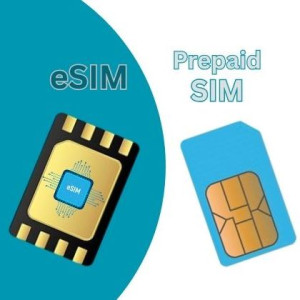
Physical Prepaid Sim Vs eSIM: Travelers Guide and Comparison
239 Views
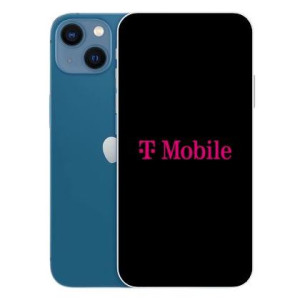
All You Need to Know About T-Mobile International Roaming
297 Views
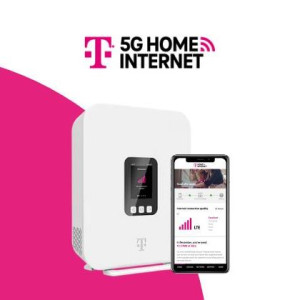
T-Mobile Home Internet: All About Data Cap and Data Pass Price
480 Views

Best Free Website Designs for Your VTU Portal
6761 Views

6 Cheap Data VTU Websites in Nigeria
7707 Views
How to Activate eSIM on Pixel 3 and Pixel 3a (Step-by-Step Guide)
377 Views
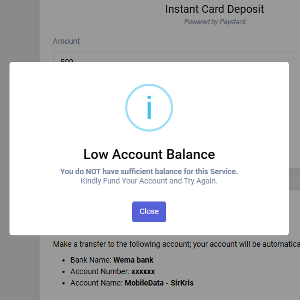
How to Secure your VTU Portal using the Low User Balance feature
3396 Views

Download the Best Free VPN for PC, Android and Chrome
96 Views


